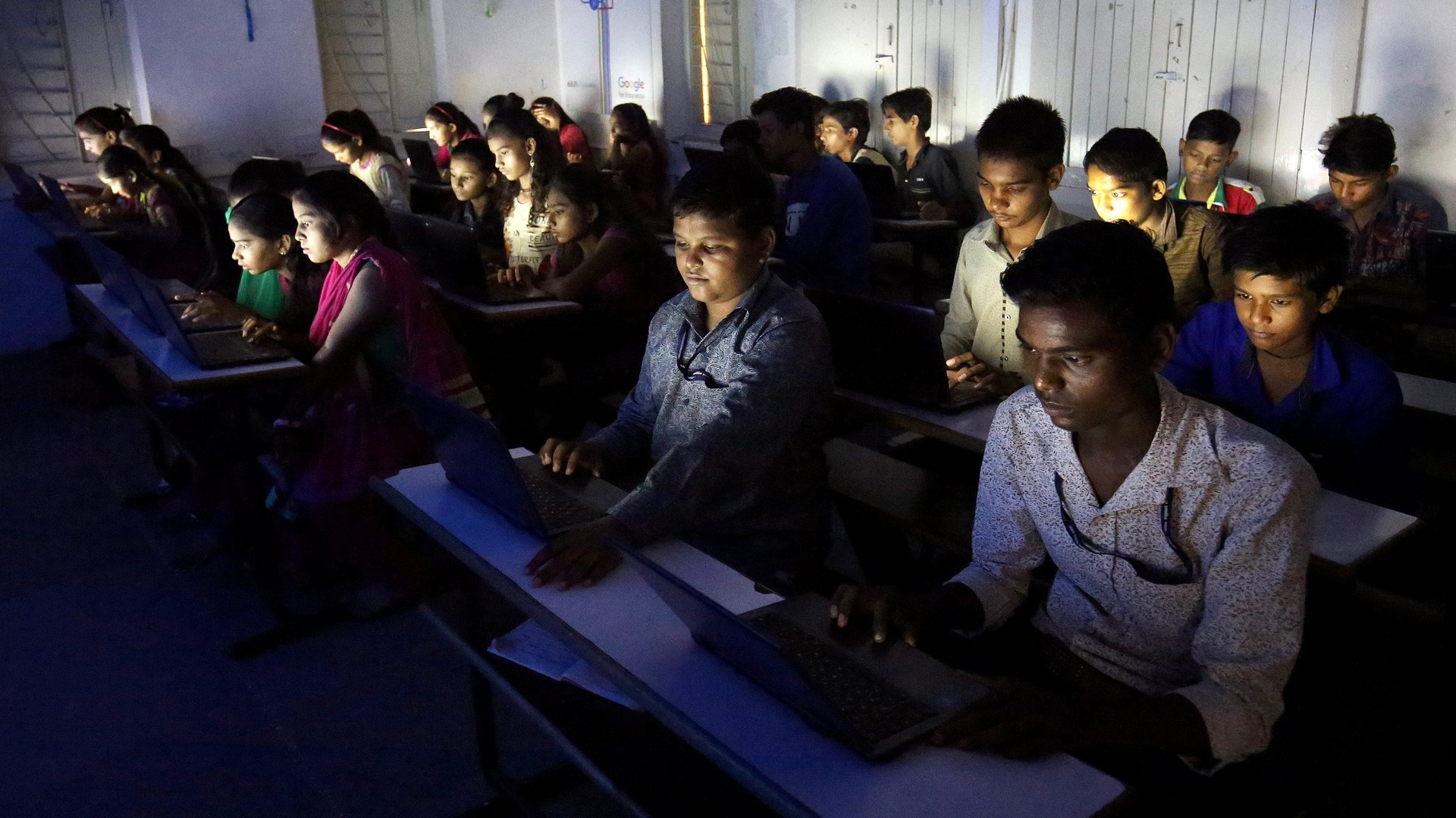Stanford and Michigan university are the most popular among Coursera’s 5 million Indian users
A large number of Indians seem happy to forego textbooks and adopt tech-savvy online courses.


A large number of Indians seem happy to forego textbooks and adopt tech-savvy online courses.
This is perhaps why Coursera, the US-based edtech platform, has 4.8 million users in India, accounting for over 10% of its user base. The company hopes to further cash in on this popularity. It recently tied up with the Indian Institute of Management Calcutta, where the elite business school will offer a master-track course on the digital platform.
This is a marker of both India’s skilling needs and Coursera’s potential to fulfil them, according to Jeff Maggioncalda, CEO of Coursera. “If you look at what’s happening demographically, there are 300 million people that are going to be entering the workforce, a 100 million in the next 10 years in India alone,” he told Quartz. IIM Calcutta and Indian School of Business in Hyderabad were the first two institutes to sign on, and Coursera hopes there will be many more to follow.
In an interview with Quartz, Maggioncalda talks about the Indian education market, and the popularity of AI and coding courses here. Edited excerpts:
How do you see Coursera bridging the skilling gap for its Indian users?
The gross enrollment ratio, the percentage of people who start college after high school is about 26% in India. And the prime minister has said by 2025 he’d like to get that to 36%, which is great. I believe the government has tripled their spending as a percentage of GDP on education. But we estimate it would take about 250 new universities to meet the demand to get from 26% to 35%. So there’s a really big need to create more access to higher education.
Over the last seven years, we have signed up 170 universities in 30-35 businesses who’ve authored 3,600 courses and these courses are mostly in data, data science, technology, and business. Today we have about 44 million individuals on Coursera, and about 4.8 million are from India. So after the US, India is the second-largest population of learners on Coursera.
What about Coursera do you think appeals to Indians?

If you look at the demographics of learners in India on Coursera, you find that many more of them are looking for work than the global average. So clearly there is a belief here in India that a way to get an economic opportunity is through learning. The question is, well, how do you create access?
The first real vector was business-to-customer, where anybody can go on Coursera.org, you could take the courses for free and pay for the certificate. Three years ago, we launched Coursera for Business. What we found was that many companies are interested in upskilling their employees, who are often college graduates and don’t have the kinds of skills that many employers want.
Employers are realising that the world is changing so quickly that new skills and technologies are emerging. Even if you graduated from college 10 years ago, there’s a lot of things that you don’t know because things are changing so quickly. So in the first three years [of Coursera for Business’s launch in 2016], we’ve been hired by more than 2,000 companies to upskill their employees. That’s been growing more than 100% per year. We have over 50 companies in India who have been using Coursera, including the big IT firms.
Which are the most popular courses among Indian students?
Over the past year, the number one course is Stanford’s machine learning. Second, the University of Michigan’s programming for everyone, which is basically an introduction to Python. The third is AI for everyone, followed by neural networks and deep learning, and algorithms from Princeton University.
Have you planned any specific offering for India?
Generally speaking, as a platform, we try to build a functionality that’s available for everyone. India has a high number of mobile users on our platform. But in many emerging economies, and certainly, in the rural populations in India, a lot of people can’t have continuous access to the internet. So features such as being able to download an offline version of the course is a key functionality. On the content side, we recently announced that IIM-Calcutta is going to be putting a couple of master track certificates on Coursera.
Will Coursera also offer courses in Indian languages?
We already have many of our popular courses translated into multiple languages and they have subtitles and the transcripts are in another language. One example of the way we deal with language translations is what we do with the Abu Dhabi government. So Abu Dhabi hired us to offer Coursera to 60,000 civil service workers, and many of them don’t speak English. What they did is they really looked at what types of skills they wanted to teach their government employees, and we picked 100 specific courses and translated them into Arabic. So my guess is especially when we do institutional relationships we will look at this language question accordingly.
Do you feel Coursera has gained credibility? For instance, would people put it up on their LinkedIn profiles or resumés?
A couple of years ago I was told that the second most frequent credential on LinkedIn is a Coursera certificate. I think it is still true. And then, if you take a specialisation, which is a series of four or five courses, that’s also a credential that you can post on LinkedIn. What you find is that specialisations have a little higher value than courses because typically they’re more advanced, and they’re also a longer level of study that teaches you more. Andrew Ng’s deep learning specialisation in one that always goes up on LinkedIn because there’s no other degree that you can get in deep learning.
Does the fact that India is a price-sensitive market play into your strategy here?
You know, in India we have almost five million learners, but the percentage of learners in India who pay for a course compared to the percentage of learners in other parts of the world is generally lower. It is not surprising because the amount of money people have to spend is often less. It’s one of the reasons why we think that working with institutions can be so valuable. If you’re a student at a university that buys Coursera for campus (a specific offering of courses for colleges and universities), chances are the university is actually paying for it and not the student.
So we think that offering education through institutions where the institution pays for it makes it a lot easier for the individual.